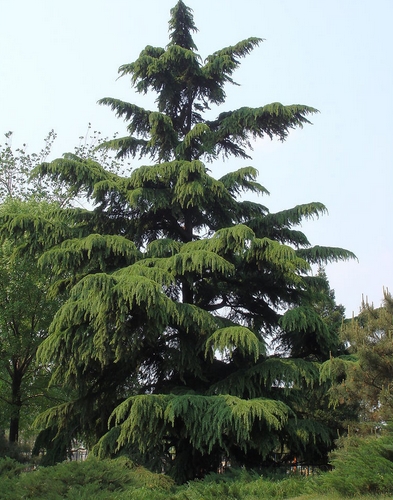Cedrus deodara seed
Deodar Cedar, (Himalayan Cedar), Cedrus deodara, tree Seeds
Evergreen, Wildlife Shelter, Shade Tree, Screen/Hedge, Heat, Drought and Urban Tolerant, Bonsai
Native to the Himalayas, Deodar Cedar is an evergreen conifer that is pyramidal when young, maturing to flat-topped trees with broad-spreading horizontal branching. Deodar Cedars are perhaps the most pendulous of the true cedars, with drooping branchlets and branching that is gracefully drooping at the tips. Lower branches typically remain on the tree as it ages, often touching the ground. This is a moderate growing tree that typically matures to 40 to 70 feet tall in its first 25 years. In its native habitat, trees reportedly will grow much taller over time, sometimes reaching 150 to 200 feet tall. Dark grayish-green needles to 1.25 inches long appear in clusters, with upright cones to 4 inches long.
Most cultivars of Deodar Cedar will grow into large and handsome specimen trees that need plenty of room. Use these in the back of a large landscape so they can be seen in their entirety. From a distance, deodar is dense and plumose with a fine texture. With proper pruning Deodar Cedars can be maintained as a hedge.
Leaf: Evergreen needles, dark green but may have some silvery bloom giving them a blue-green color; 1 to 2 inches long, sharp pointed; occur singly on new growth and then later on spur shoots; remaining on the tree for 3 to 6 years.
Flower: Monoecious; male cones 2 to 3 inches long on the lower parts of crown; female cones erect, purplish, occur on upper portions of crown.
Fruit: Upright cones, 3 to 4 inches long and 3 inches across; deciduous scales; initially green and purplish, then later turning a reddish brown when mature, usually resinous.
Twig: Slender, with numerous short spur shoots, branches droop with age; buds are very small and round.
Bark: Initially smooth and gray-brown, later developing short furrows with scaly ridge tops.
Form: Young trees have a broad pyramidal crown that becomes wider with age; branch tips and leaders droop and have a fine texture. In the landscape it can reach 80 feet tall but becomes much taller in its native range.

